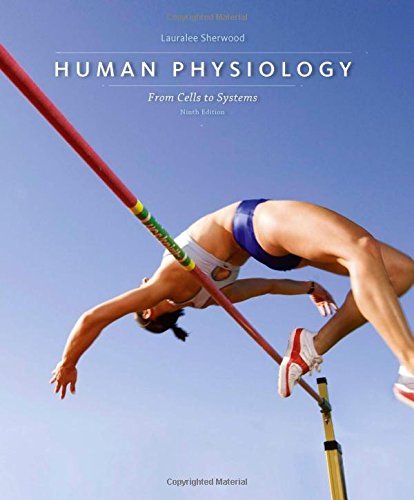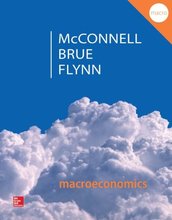Description
Human Physiology From Cells to Systems Sherwood 9th Edition Test Bank
Human Physiology From Cells to Systems Sherwood 9th Edition Test Bank
***THIS IS NOT THE ACTUAL BOOK. YOU ARE BUYING the Test Bank in e-version of the following book***
Name: Human Physiology From Cells to Systems
Author: Sherwood
Edition: 9th
ISBN-10: 1285866932
Type: Test Bank
– The test bank is what most professors use an a reference when making exams for their students, which means there’s a very high chance that you will see a very similar, if not exact the exact, question in the test!
– The file is either in .doc, .padf, excel, or zipped in the package and can easily be read on PCs and Macs.
– Delivery is INSTANT. You can download the files IMMEDIATELY once payment is done.
If you have any questions, please feel free to contact us. Our response is the fastest. All questions will always be answered in 6 hours., most of the time within 30mins
We also faced similar difficulities when we were students, and we understand how you feel.
But now, with the Human Physiology From Cells to Systems Test Bank, you will be able to
* Anticipate the type of the questions that will appear in your exam.
* Reduces the hassle and stress of your student life.
* Improve your studying and also get a better grade!
* Get prepared for examination questions.
*Can save you time and help you understand the material.
This is the quality of service we are providing and we hope to be your helper.
Delivery is in the next moment. Test Bank is accurate.
Prepare to receive your Human Physiology From Cells to Systems Test Bank in the next moment.
If you have any questions, or would like a receive a sample chapter before your purchase, please contact us at inquiry@testbankcorp.com
Human Physiology From Cells to Systems Test Bank
Human Physiology From Cells to Systems Sherwood 9th Edition Test Bank ISBN: 1285866932
Chapter 1—Introduction to Physiology and Homeostasis
MULTIPLE CHOICE
1. Select the incorrect association.
a. anatomy/heart structure
b. human body/multicellularity
c. oxygen/cellular waste
d. physiology/stomach function
e. unicellularity/amoeba
ANS: C PTS: 1 DIF: Comprehension
2. Which of the following is a mechanistic explanation of a physiological phenomenon?
a. You breathe to obtain oxygen.
b. You sweat to cool off.
c. Your stomach secretes digestive juices when stimulated by the nervous system.
d. Your heart beats to pump blood.
e. Your kidneys produce urine so that cellular wastes do not poison your body.
ANS: C PTS: 1 DIF: Application
3. The influence of oxytocin on the uterus during childbirth and the subsequent effect of uterine stretch on the release of oxytocin is an example of
a. negative feedback
b. positive feedback
c. extrinsic control
d. negative feedback and extrinsic control
e. none of these
ANS: B PTS: 1 DIF: Knowledge
4. Food in your stomach is in direct contact with ______ tissue.
a. connective
b. epithelial
c. glandular
d. muscle
e. nervous
ANS: B PTS: 1 DIF: Comprehension
5. Which of the following does a person not maintain through homeostasis?
a. Concentration of nutrients in the blood
b. Concentration of oxygen around the body
c. Blood pressure
d. Temperature of the brain
e. Posture while sitting in a chair
ANS: B PTS: 1 DIF: Comprehension
6. Sweat glands consist of specialized ______ cells.
a. connective
b. endocrine
c. epithelial
d. muscle
e. nervous
ANS: C PTS: 1 DIF: Knowledge
7. The respiratory system
a. obtains O2 from and eliminates CO2 to the internal environment
b. includes the heart and lungs
c. helps regulate the pH of the internal environment by removing acid-forming CO2 from the blood
d. performs all of the functions listed above
e. obtains O2 from and eliminates CO2 to the internal environment and helps regulate the pH of the internal environment by removing acid-forming CO2 from the blood
ANS: C PTS: 1 DIF: Knowledge
8. Select the incorrect statement about connective tissue.
a. Bone is an example.
b. Blood is an example.
c. Elastin may be found in the extracellular material.
d. It has tightly-packed cells.
e. It is a primary tissue type.
ANS: D PTS: 1 DIF: Knowledge
9. Which of the following body systems is not directed entirely toward maintaining homeostasis?
a. reproductive system
b. endocrine system
c. nervous system
d. muscular system
e. integumentary system
ANS: A PTS: 1 DIF: Knowledge
10. Which sequence represents a correct hierarchy of biological organization in a human, from smaller to larger?
a. chemical, organ, tissue, system, organism
b. cell, tissue, organ, system, organism
c. tissue, cell, system, organism, organ
d. organ, tissue, cell, organism, system
e. system, cell, organ, organism, tissue
ANS: B PTS: 1 DIF: Knowledge
11. The internal environment
a. is not in direct contact with the body’s cells
b. consists of the intracellular fluid
c. must be maintained at absolutely unchanging composition, temperature, and volume for survival of the body
d. is in direct contact with the body’s cells and consists of the extracellular fluid
e. consists of the intracellular fluid and must be maintained at absolutely unchanging composition, temperature, and volume for survival of the body
ANS: D PTS: 1 DIF: Comprehension
12. Extracellular fluid
a. is the internal environment of the body
b. is outside the cells but inside the body
c. consists of the plasma and interstitial fluid
d. exhibits a dynamic steady state in regard to composition, temperature, and volume
e. is described by all of the above statements
ANS: E PTS: 1 DIF: Knowledge
13. Nutrients and oxygen are distributed through the body mainly by the ____ system.
a. circulatory
b. digestive
c. endocrine
d. integumentary
e. skeletal
ANS: A PTS: 1 DIF: Knowledge
14. Which of the following statements about negative feedback is incorrect?
a. It exists when a change in a regulated variable triggers a response that opposes the change.
b. It exists when the input to a system increases the output and the output inhibits the input.
c. The control system’s input and output continue to enhance each other.
d. It is the method by which most of the body’s control mechanisms operate.
e. It helps maintain the body’s dynamic, steady state.
ANS: C PTS: 1 DIF: Comprehension
15. Identify the characteristics associated with endocrine glands.
a. lack ducts
b. secrete chemicals directly into the blood
c. derived from epithelial tissue
d. include the parathyroids
e. all of these
ANS: E PTS: 1 DIF: Knowledge
16. Which of the following is least related to connective tissue?
a. gland
b. bone
c. blood
d. tendon
e. elastin
ANS: A PTS: 1 DIF: Knowledge
17. Which of the following is not an example of negative feedback?
a. A low grade on an exam causes a student to study harder for the next exam.
b. A small stone rolls down a hill and starts an avalanche.
c. A person goes to eat in the cafeteria when he/she gets hungry.
d. You change a flat tire so you can continue on a journey in your car.
e. A person’s body shivers after the person falls into a cold river.
ANS: B PTS: 1 DIF: Application
18. Evaporation of sweat cooling the body is an example of
a. negative feedback
b. positive feedback
c. a feedforward mechanism
d. an intrinsic (local) control mechanism
e. autoregulation
ANS: A PTS: 1 DIF: Comprehension
19. The two major regulatory systems in the body are
a. nervous and respiratory
b. nervous and endocrine
c. endocrine and respiratory
d. endocrine and lymphatic
e. circulatory and endocrine
ANS: B PTS: 1 DIF: Knowledge
20. Calcium is stored mainly in the ____ system.
a. digestive
b. endocrine
c. integumentary
d. muscular
e. skeletal
ANS: E PTS: 1 DIF: Knowledge
21. If a letter in the alphabet is equated to a cell, then which of the following would be most like an organ?
a. two paragraphs
b. a paragraph
c. a word
d. a sentence
e. two sentences
ANS: D PTS: 1 DIF: Application
22. Identify the correct statement(s) about stem cells.
a. They are undifferentiated embryonic cells.
b. They may reproduce many times.
c. Their daughter cells may differentiate into a number of different specialized cell types.
d. All of the above.
e. None of the above.
ANS: D PTS: 1 DIF: Knowledge
23. Which of the following is a feedforward phenomenon?
a. Increasing the amount of insulin secreted before nutrients in food enter the blood.
b. Shivering in response to having cold air around the body.
c. Sweating after being in a sauna for 10 minutes.
d. Eating a doughnut because you are hungry.
e. Jerking your hand away from a hot stove after you touch it.
ANS: A PTS: 1 DIF: Application
24. The statement “Things are going from bad to worse” would be most closely related to
a. feedforward d. homeostasis
b. positive feedback e. regulatory control
c. negative feedback
ANS: B PTS: 1 DIF: Application
25. The ability of the brain to maintain optimum blood pressure by speeding up or slowing down the heart is an example of
a. intrinsic control d. Both a and c
b. extrinsic control e. Both b and c
c. positive feedback
ANS: B PTS: 1 DIF: Comprehension
TRUE/FALSE
1. Cells eliminate carbon dioxide as a waste product.
ANS: T PTS: 1 DIF: Knowledge
2. All cells that are not pluripotent can reproduce.
ANS: F PTS: 1 DIF: Knowledge
3. Highly differentiated tissues such as nervous and cardiac muscle are incapable of reproduction because they are pluripotent.
ANS: F PTS: 1 DIF: Knowledge
4. Enzymes are carbohydrates that speed up chemical reactions in the body.
ANS: F PTS: 1 DIF: Knowledge
5. A mechanistic explanation of why a person breathes is to obtain oxygen.
ANS: F PTS: 1 DIF: Comprehension
6. A non-mechanistic explanation of why a person sweats is to cool off.
ANS: T PTS: 1 DIF: Comprehension
7. Tissues are composed of two or more types of cells organized to perform a particular function or functions.
ANS: F PTS: 1 DIF: Knowledge
8. Blood is a type of connective tissue that contains small fibers of elastin protein in the extracellular material called plasma.
ANS: F PTS: 1 DIF: Knowledge
9. Glands are formed during embryonic development by pockets of epithelial tissue that dip inward from the surface.
ANS: T PTS: 1 DIF: Knowledge
10. Endocrine glands secrete hormones through ducts into the blood.
ANS: F PTS: 1 DIF: Knowledge
11. Insulin is a hormone that is secreted into the lumen of the intestine in response to the presence of food.
ANS: F PTS: 1 DIF: Comprehension
12. The epidermis that covers the skin is a simple organ.
ANS: F PTS: 1 DIF: Knowledge
13. The external environment is found outside cells but inside the body.
ANS: F PTS: 1 DIF: Knowledge
14. Factors that are homeostatically regulated are maintained at a constant, fixed level unless disease is present.
ANS: F PTS: 1 DIF: Comprehension
15. The respiratory system removes carbon dioxide transported to it by the blood.
ANS: T PTS: 1 DIF: Comprehension
16. To sustain life, the internal environment must be maintained in an absolutely unchanging state.
ANS: F PTS: 1 DIF: Comprehension
17. Some activities performed by the muscular and nervous systems are not directed toward maintaining homeostasis.
ANS: T PTS: 1 DIF: Knowledge
18. The plasma surrounds and bathes all of the body’s cells.
ANS: F PTS: 1 DIF: Knowledge
19. The concentration of salt in the extracellular fluid influences how water enters and leaves cells.
ANS: T PTS: 1 DIF: Knowledge
20. Exocrine glands are the only structures in the body capable of secretion.
ANS: F PTS: 1 DIF: Knowledge
21. Secretion in response to appropriate stimulation refers to the release of specific products that have, in large part, been synthesized by the cell.
ANS: T PTS: 1 DIF: Knowledge
22. The endocrine system relies on the circulatory system for the transport of hormones.
ANS: T PTS: 1 DIF: Knowledge
23. One organ can belong to more than one body system.
ANS: T PTS: 1 DIF: Knowledge
24. The integumentary system contains specialized organs called sweat glands, which are important in regulating body temperature.
ANS: T PTS: 1 DIF: Knowledge
25. Negative feedback operates to prevent any change in the value of a controlled factor in the body.
ANS: F PTS: 1 DIF: Comprehension
26. Positive feedback moves a controlled variable even further away from a steady state.
ANS: T PTS: 1 DIF: Knowledge
27. With positive feedback, a control system’s input and output continue to enhance each other.
ANS: T PTS: 1 DIF: Comprehension
28. Feedforward mechanisms bring about a response in reaction to a change in a regulated variable.
ANS: F PTS: 1 DIF: Knowledge
29. Most homeostatic mechanisms operate on the principle of positive feedback.
ANS: F PTS: 1 DIF: Comprehension
30. A single pluripotent cell without dividing can differentiate into more than one kind of mature body cell.
ANS: F PTS: 1 DIF: Knowledge
31. With negative feedback, a control system’s output counteracts the input into the system.
ANS: T PTS: 1 DIF: Comprehension
32. The simple fact that exercising muscles use more O2 is an example of negative feedback.
ANS: F PTS: 1 DIF: Comprehension
33. If a pluripotent cell differentiates to become a skin cell, it may revert back to its pluripotent condition and then become a muscle cell.
ANS: F PTS: 1 DIF: Comprehension
34. The way in which the nervous system affects a person’s heart rate is an example of intrinsic control since both the nervous system and the heart are inside the body.
ANS: F PTS: 1 DIF: Comprehension
35. The integumentary, nervous, and endocrine systems are the only systems involved in regulating body temperature.
ANS: F PTS: 1 DIF: Knowledge
COMPLETION
Complete each of the following statements.
1. The smallest unit capable of carrying out the processes associated with life is the ____________________.
ANS: cell
PTS: 1 DIF: Knowledge
2. ____________________ cells are specialized to send electrical signals.
ANS: Nerve
PTS: 1 DIF: Knowledge
3. ____________________ muscle tissue composes the heart.
ANS: Cardiac
PTS: 1 DIF: Knowledge
4. ____________________ are composed of two or more types of primary tissue organized to perform a particular function or functions.
ANS: Organs
PTS: 1 DIF: Knowledge
5. ____________________ glands secrete through ducts, whereas ____________________ glands secrete directly into the blood.
ANS: Exocrine, endocrine
PTS: 1 DIF: Knowledge
6. A(n) ____________________ is a collection of organs that perform related functions and interact to accomplish a common activity that is essential for survival of the whole body.
ANS: system or organ system
PTS: 1 DIF: Knowledge
7. The internal environment consists of the ____________________, which is made up of ____________________; the fluid portion of the blood; and ____________________, which surrounds and bathes all cells.
ANS: extracellular fluid, plasma, interstitial fluid
PTS: 1 DIF: Knowledge
8. The ____________________ is the liquid part of the blood.
ANS: plasma
PTS: 1 DIF: Knowledge
9. The body cells are in direct contact with, and make life-sustaining exchanges with, the ____________________.
ANS: internal environment (extracellular fluid)
PTS: 1 DIF: Knowledge
10. ____________________ refers to maintenance of a relatively stable internal environment.
ANS: Homeostasis
PTS: 1 DIF: Knowledge
11. ____________________ tissue is composed of cells specialized for contraction and force generation.
ANS: Muscle
PTS: 1 DIF: Knowledge
12. The ____________________ system consists of all hormone-secreting tissues.
ANS: endocrine
PTS: 1 DIF: Knowledge
13. The two major control systems of the body are the ____________________ and the ____________________.
ANS: nervous system, endocrine system
PTS: 1 DIF: Knowledge
14. ____________________ are the blood vessels where materials are exchanged between the blood and the interstitial fluid.
ANS: Capillaries
PTS: 1 DIF: Knowledge
15. The tonsils are part of the ____________________ system.
ANS: immune or lymphatic
PTS: 1 DIF: Knowledge
16. The ____________________ system eliminates waste products other than carbon dioxide and plays a key role in regulating the volume, electrolyte composition, and acidity of the extracellular fluid.
ANS: urinary
PTS: 1 DIF: Knowledge
17. The ____________________ system controls and coordinates bodily activities that require swift responses, especially to changes in the external environment.
ANS: nervous
PTS: 1 DIF: Knowledge
18. ____________________ refers to the abnormal functioning of the body associated with disease.
ANS: Pathophysiology
PTS: 1 DIF: Knowledge
19. If after making a bad grade on an exam causes a student to study harder in order to make a better grade on the next exam, the student’s response to making the bad grade would be an example of ___________________ feedback.
ANS: negative
PTS: 1 DIF: Comprehension







Reviews
There are no reviews yet.